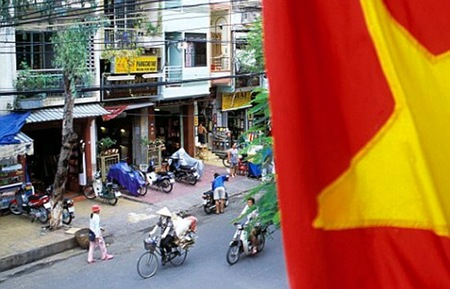Reduced bank reserve cushion economy
Reduced bank reserve cushion economy
In May of 2008 when property speculation was rampant, inflation was approaching 25 per cent, and growth in the money supply was excessive, the National Bank of Cambodia increased the reserve requirement from 8 per cent to 16 per cent.
The reserve requirement is the percentage of deposits a bank must hold as vault cash or on deposit with the central bank. It is infrequently used by developed nations, China being the exception, to control a nation’s money supply and therefore liquidity in the market.
Generally little or no interest is paid by the central banks on reserve deposits. Increasing the reserve requirement is a contractionary policy which requires a bank to hold a higher proportion of deposits with the central bank, decreasing funds available for lending and generally resulting in an increase in the cost of credit.
Lowering reserve requirements is an expansionary policy which generates more liquidity in the banking system, encouraging banks to lend, lowering their costs and lending rates. It is one of the few policy tools Cambodia has as a dollarised economy.
With the arrival of the Global Financial Crisis, the National Bank of Cambodia decreased the reserve requirement to 12 per cent as property prices plummeted, inflation fell with dropping commodity prices, and bank liquidity was restrained. The central bank also lifted a previous limit whereby a maximum of 15 per cent of a bank’s total loans could be in real estate, in an effort to revive the slumping property market.
In 2009 Cambodia’s Gross Domestic Product (GDP) was flat to negative ending five years of strong growth. Before the spike in 2008, inflation was moderate, relative to GDP growth, at around 7 per cent. The National Bank of Cambodia effectively used the reserve requirement tool when the economy was overheating in 2008 and when the global recession hit in 2009.
The banking market has long been calling for a further reduction in the reserve requirement rate back to 8 per cent. Arguably liquidity in the market doesn’t appear to be very tight.
Cambodia has 32 commercial banks and 7 specialized banks for a population of less than 15 million, with an estimated 4 per cent of the population holding deposit accounts and 20 per cent having loans. Growth hasn’t been tempered with loans growing 35 per cent and deposits increasing 25 per cent in the first half of 2012.
By tripling the minimum capital requirement for commercial banks to US$36.5 million in 2010, the central bank not only strengthened the banking sector but creatively added a significant pool of new liquidity into the market.
However, there are very credible arguments for reducing the reserve requirement rate. The cost of attracting dollar deposits in Cambodia remains high, with 12 month deposit rates around 5 per cent compared to 1 per cent in the US. If the banks can translate a lower cost of funds to lower lending rates, the cost of credit would decrease.
Cambodia’s exports are shrinking as the US and European economies are contracting, and the short-term outlook remains bleak. While the largest of Cambodia’s banks are enjoying accelerating profits, the remaining three-quarters of the market could use a shot in the arm.
It is certainly not necessary to go back to an 8 per cent reserve requirement, but perhaps a 2 per cent decrease would shield Cambodia against further global economic deterioration, reduce lending rates, and stimulate competition in a crowded banking market that manages to hold rates relatively high.
phnom penh post
















